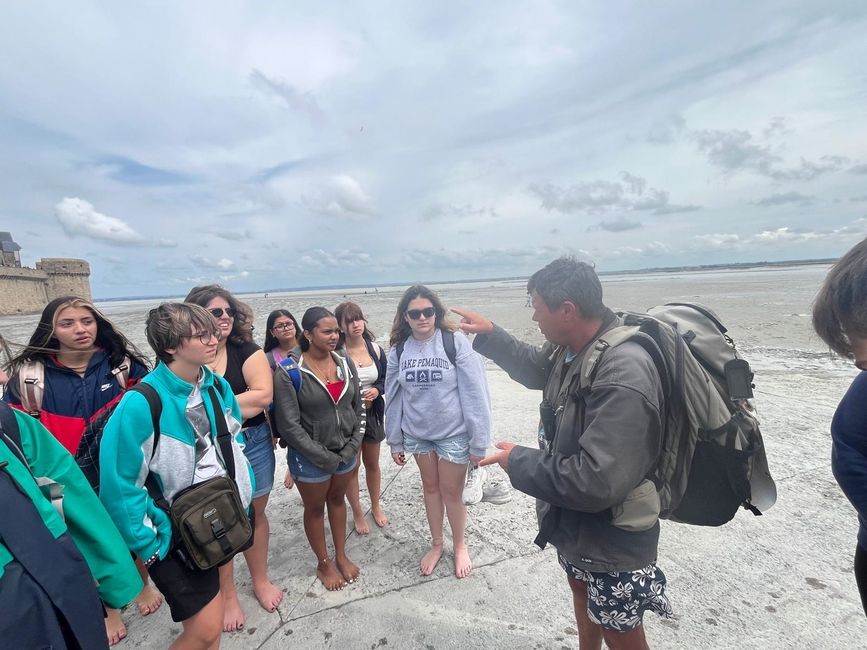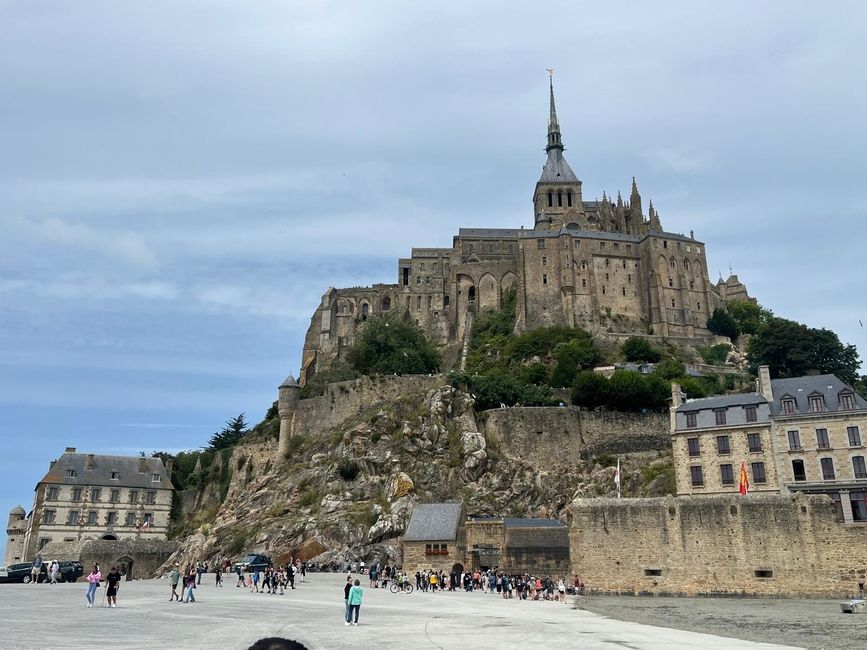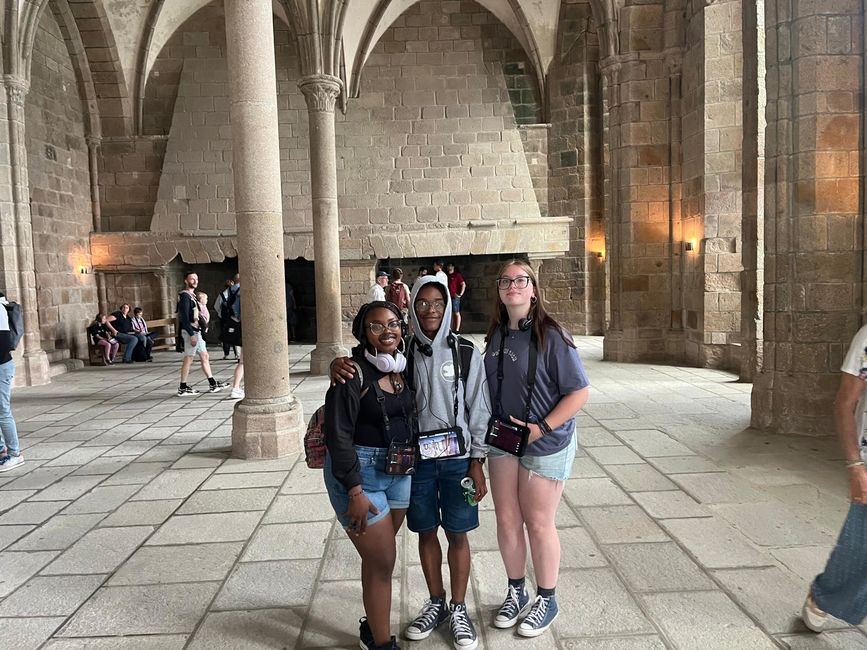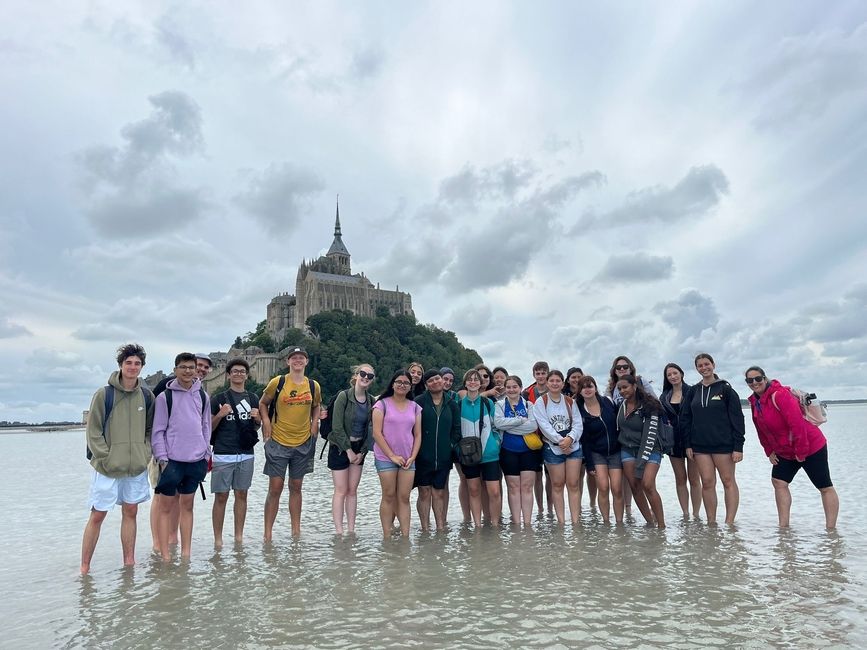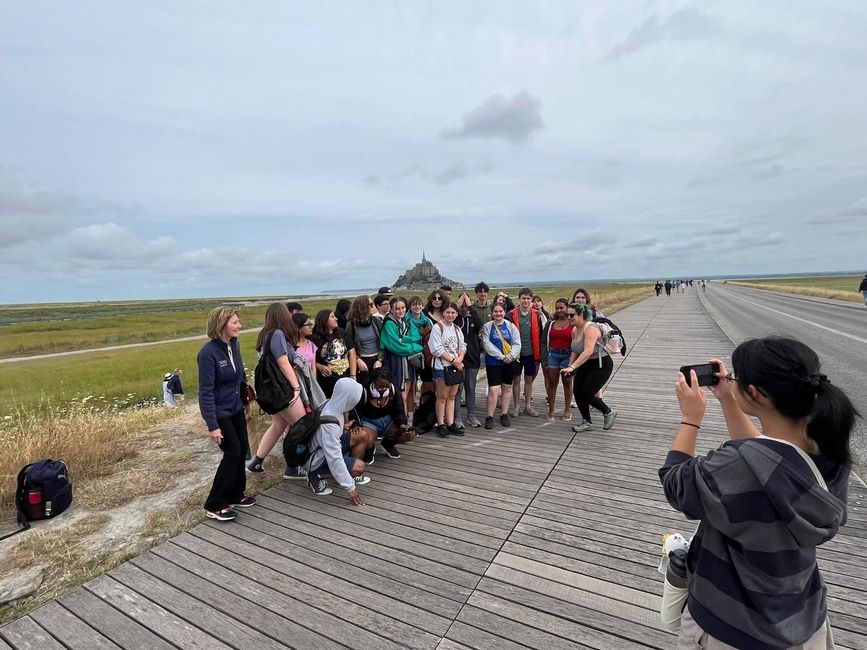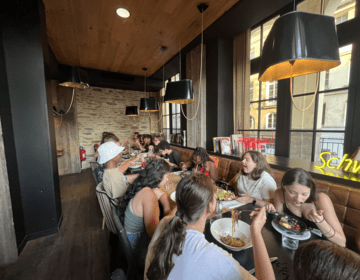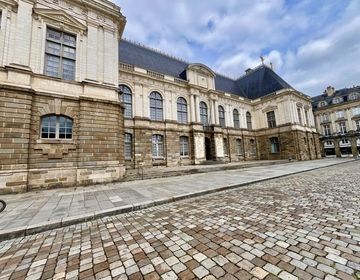Le Mont St. Michel: Climbing up into the Sky, and Sinking down into the Sand
The Rennes Language & Culture program students had the opportunity to follow in the footsteps of centuries' worth of pilgrims (and tourists) to see one of France's most renowned and most visited historical sights, le Mont Saint Michel, a 1000 year old Medieval abbey surrounded by a small village built on a small island off the coast of Normandy. We all felt like we were pilgrims as we made the thirty-minute walk from the parking lot to the village, but the real challenge of reaching the abbey which towered over us still laid ahead of us. We all worked up quite a set and gave our legs quite a workout as we climbed over 300 steps up La Grande Rue, the main road through the city, and up into the abbey itself. We were worn out, but the view from the top was well worth the climb.
Inside the abbey, the students received a tablet which led them on a guided tour with information about each room they visited, and it even showed images of what those spaces would have looked like in 11th, 12th and 13th centuries. Many of us were surprised to see the differences between what is was like then verses now. Today the walls are bare and gray, but in the abbey's prime, every surface - the floors, the walls, the ceilings, were covered with bright colors of paint and vivid tapestries adorned the walls. As wel walked through abbey, we got to see the rooms where the monks ate in silence, where they prayed, and where they would sit to transcribe and illustrate books.
We also learned that the abbey has also served more sinister purposes in its history. Following the French Revolution, le Mont St Michel was converted into a prison and it housed some of France's most notorious criminals of the time. A relic from this time period is a replica of a giant wooden wheel that prisoners were forced to walk in (like hamsters!) in order to bring up food and supplies from the ground.
After a break for the students to eat their pique-niques provided to them by their host families and explore the shops and restaurants located in the village, we took off our shoes and followed our trained guide out into the water that surrounds the island. The tide was heading out, so most of the island was surrounded by dry land, and the waters that remained were shallow. Our guide taught us about the qualities of the sands, the vegetation that grows in it, and the strength of the tides as they come in and out of the bay - the strongest in all of Europe! We got a chance to see sides of le Mont St Michel that one doesn't normally see from the road that approaches the island. The real treat of this part of our excursion though was the opportunity to experience les sables mouvants - quick sand! Students had a great time agitating the sands and sinking down to their knees, and even their hips, before working together to climb out. It was a fun and exciting way to end a tremendous day together learning about this UNESCO World Heritage Site.
Related Posts
Bon Voyage Banquet: One Last Bite Together
All students from Language and Culture, teachers, PL, and office staff enjoyed a final dinner together Thursday night. We had a large table waiting for us at Piccadilly located right... keep reading
Château et Parc Zoologique de la Bourbansais
Seeing a zoo in France is unlike any other. The zoo students went to see on Friday not only featured a variety of animals, but it also had a castle... keep reading
Le parlement de Bretagne à Rennes!
On a beautiful afternoon last week in Rennes, the students in the High School Study Abroad Global Navigator Program enjoyed an introduction to the Parlement of Rennes which used to... keep reading
